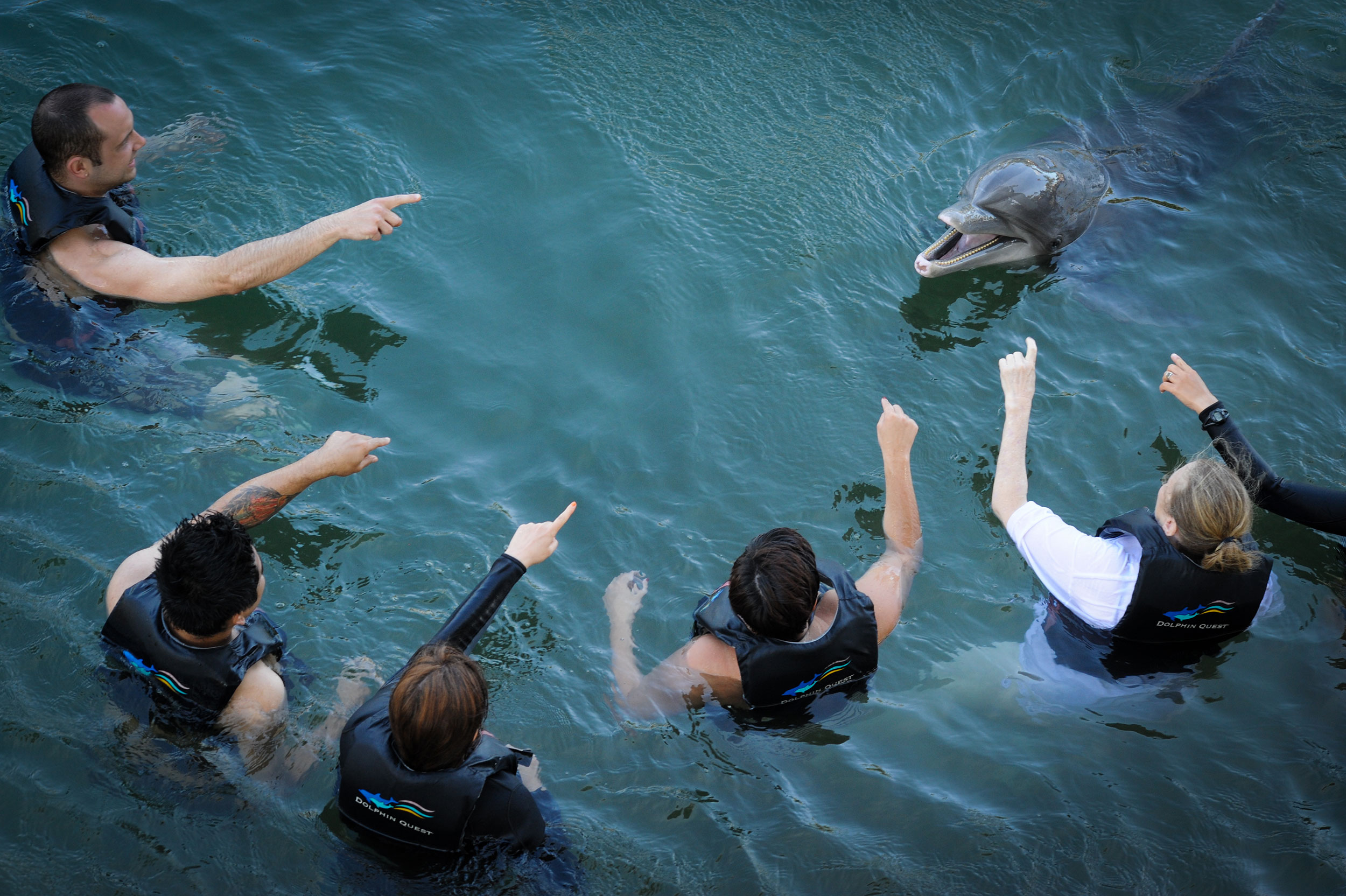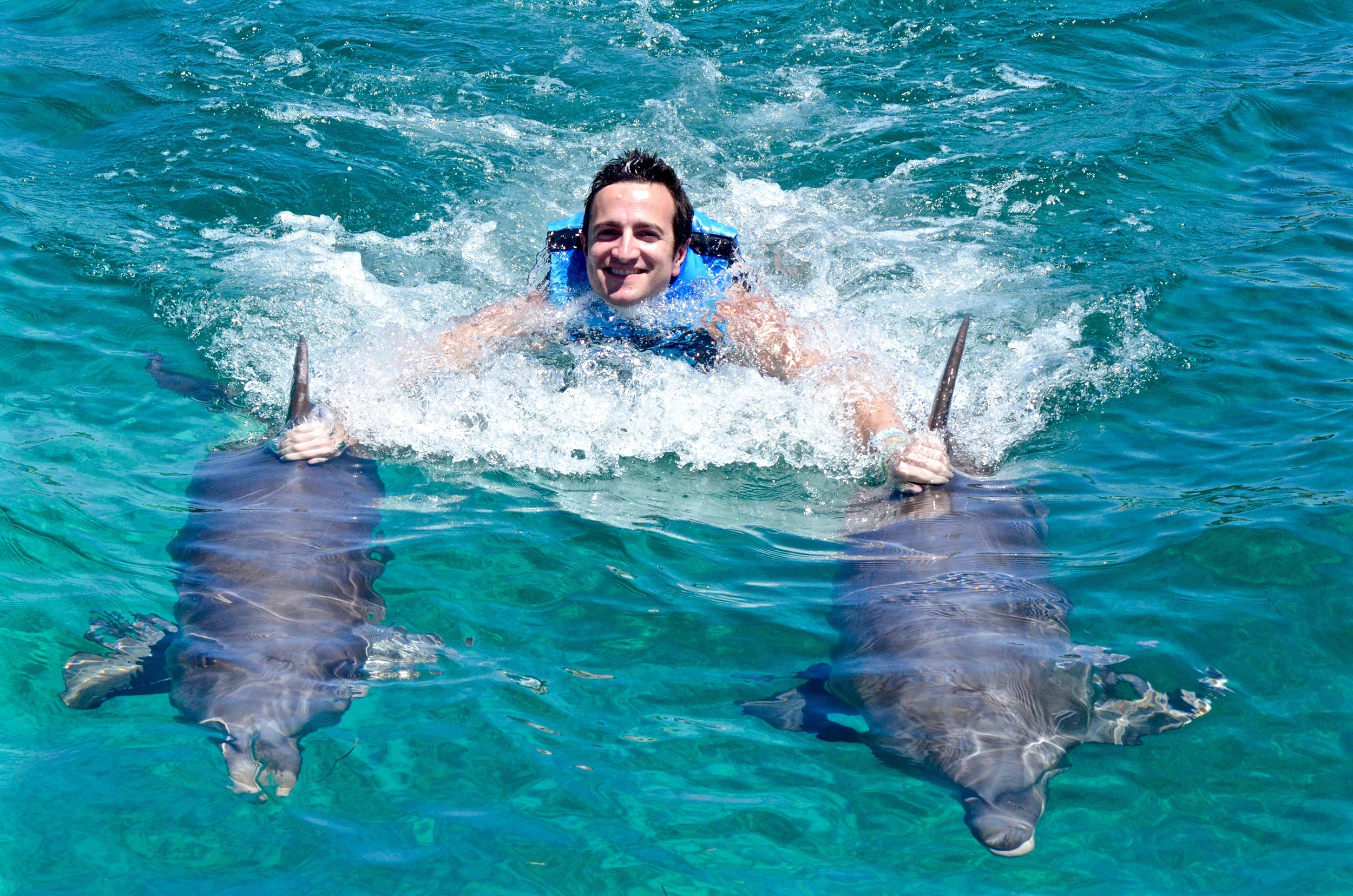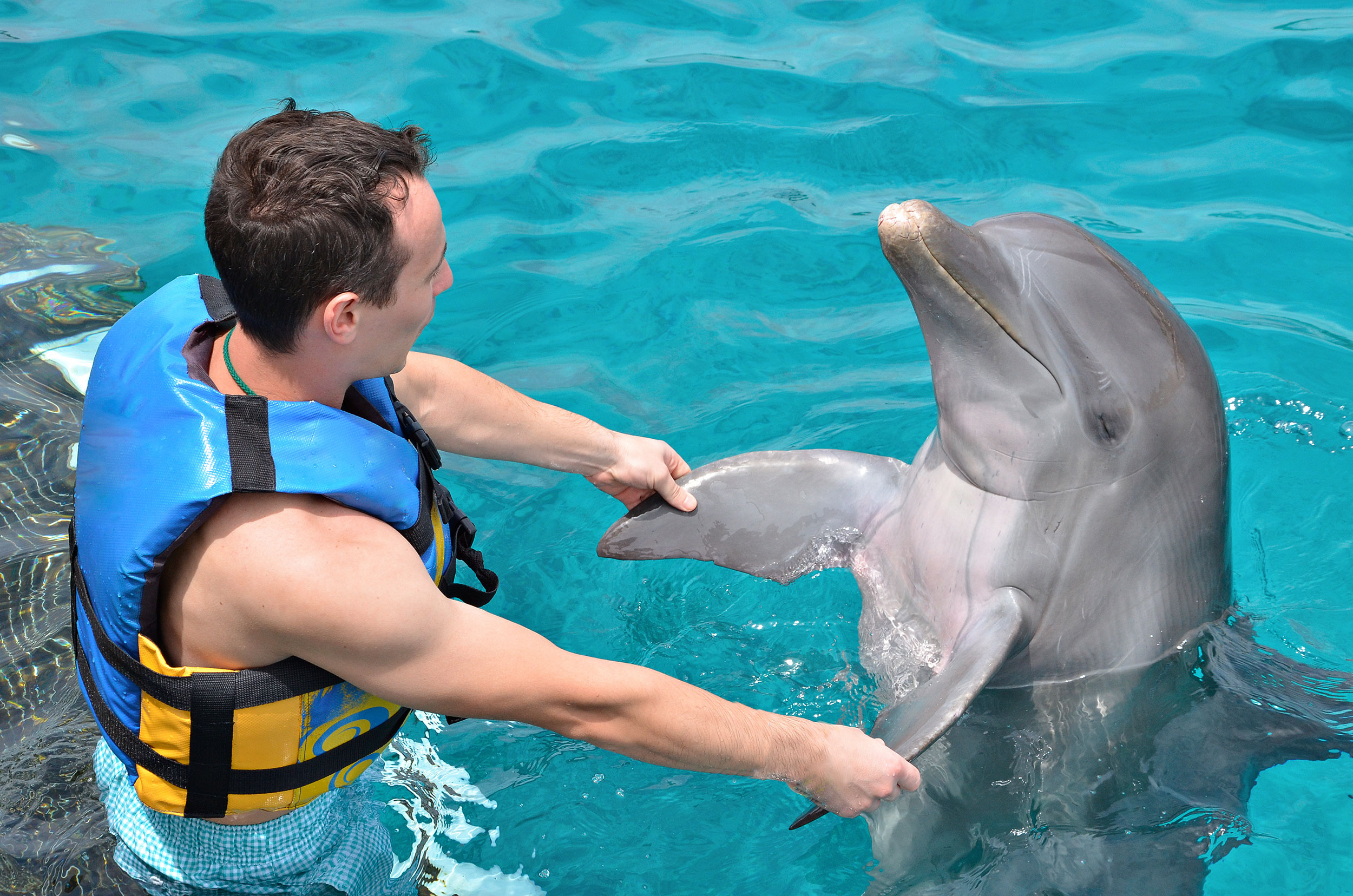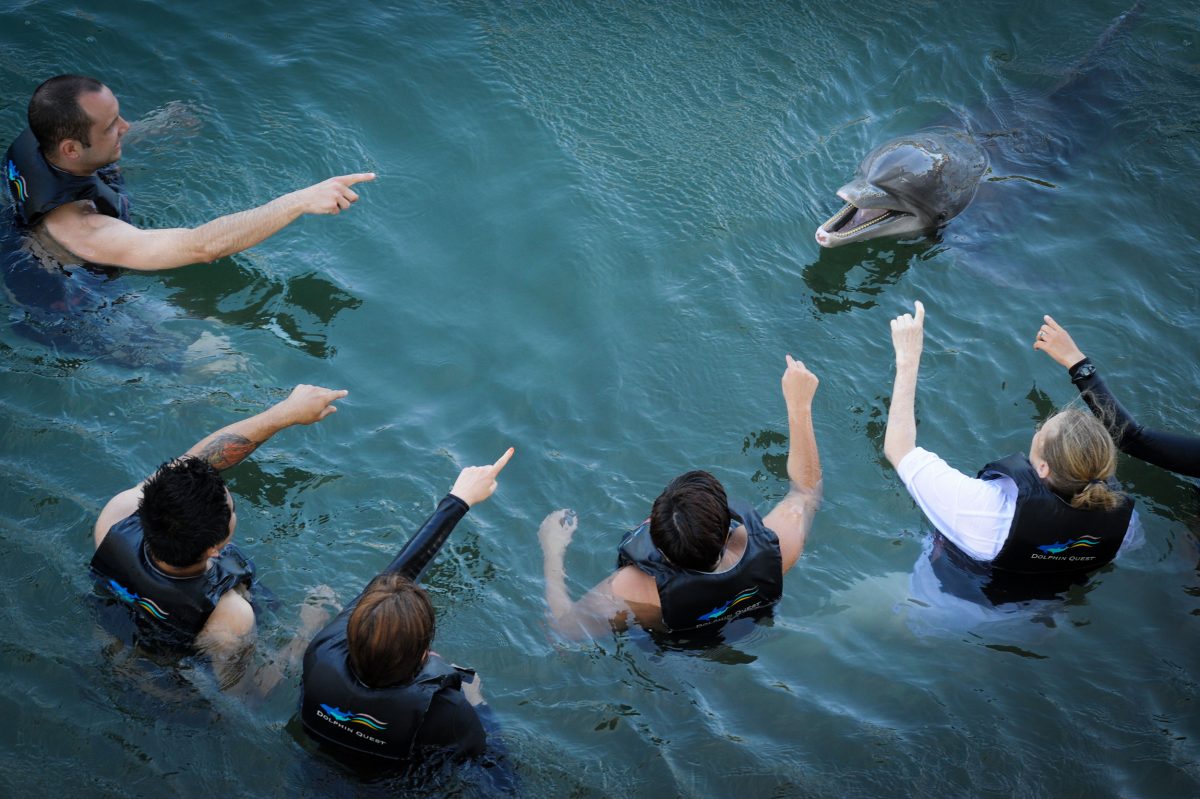
Swim with the Dolphins

Swim with the Dolphins programs, also known as SWTD, are attractions where you can swim and interact with dolphins in captivity. Visitors at these venues can often hang onto a dolphin’s dorsal fin and be towed through the water, be pushed around the water by a dolphin’s beak, or be photographed kissing a dolphin. Some facilities even allow the visitors to be dolphin “trainers” for the day. These attractions are extremely popular in the Caribbean, particularly the Bahamas, Jamaica, Dominican Republic, Grand Cayman, and Cancun, Mexico, with a huge number of visitors coming from Caribbean cruise ships. They are also popular in the United States and the Middle East, and becoming increasingly more popular in Asia. The programs seem harmless, as the dolphins are playful by nature and have a permanent smile, but they are actually very cruel and inhumane.
Some dolphins at SWTD facilities are captive born, but the majority are captured in the wild. The capture methods are all violent and very traumatic for the dolphins. Most involve high speed boats that chase dolphins into nets after separating them from their pods. In “drive hunts”, pods are herded towards the shore and shallow water, by banging pipes underwater to confuse and disorient them. After they are rounded up and trapped, the youngest and most attractive are taken, and the rest are typically stabbed and slaughtered. The capture is traumatic as the dolphins live in close knit social groups, and many die due to injuries or stress. Many die during transit before they ever make it to these facilities.
Some dolphins at SWTD facilities are captive born, but the majority are captured in the wild
The dolphins that survive the capture and are brought into captivity, often die within several months. They are distressed and disoriented, and taken to sea pens or concrete pools, where they are put in chemically treated and chlorinated water. Dolphins use echolocation in the wild which is like a sonar that allows dolphins to “see” with sound, as they create sound waves that reflect and bounce off objects in the water. Because they are in small enclosed spaces opposed to the open ocean, the sound waves are literally bouncing off the walls, which causes confusion, discomfort and stress. Training methods are also cruel, and usually involve food deprivation, and the dolphins are kept hungry so they will interact and perform. Most of these facilities are poorly regulated, and are known to provide little or no veterinary care. Dolphins in captivity often die at a much younger age than they would in the wild.
Many SWTD programs falsely label themselves as educational or beneficial for dolphin conservation, but dolphins are not meant to be kept in captivity. In the wild they are known to travel up to 80 miles per day and do not belong in small sea pens or concrete pools. They belong with their pods in the open ocean. Please do not support Swim with the Dolphins programs.





